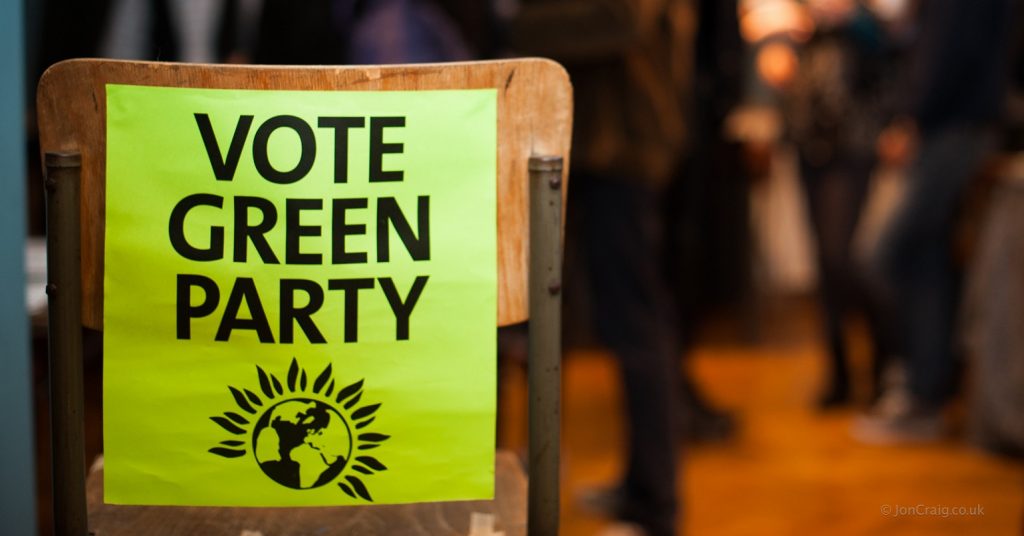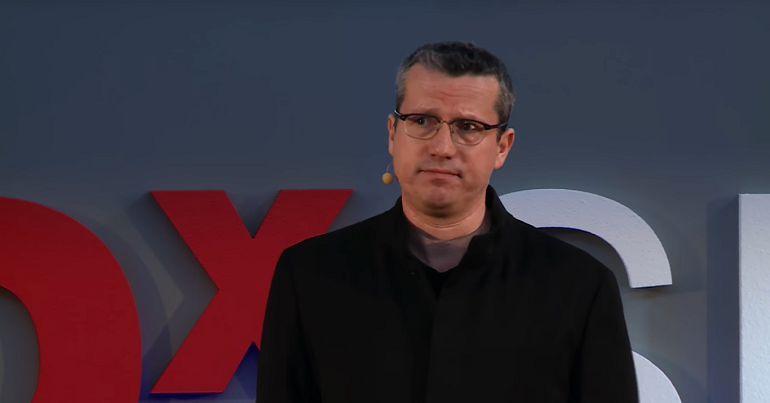How the Irish Greens got f**ked by Fianna Fáil
Possibly the first ‘viral’ moment in the Dáil (Irish Parliament) was provided by the Green TD for Dublin Mid-West, Paul Gogarty. It’s certainly eye (and ear) catching:
After nearly 20 years of building support the Irish Greens/Comhontas Glas entered Government as junior coalition partners to Fianna Fáil in mid-2007. The 2007 election had been a success. Greens held their own in a squeeze.
Having entered a Fianna Fáil led government Greens hold two cabinet positions, and have a junior minister.
The coalition has proved difficult for the Irish Greens. Electorally it has been a disaster and is very likely to result in a Green wipe out in the next election. In the 2009 European elections Greens should have won at least 2 MEPs. Instead, in Dublin, they finished behind Patricia McKenna, a former Green MEP running as an independent, who left the party in protest at the behaviour of Greens in coalition. Their combined votes would have won them a seat but in the event neither was elected.
The massive decline in Green popularity is down to two principal causes. The first is the catastrophic decline in the Irish economy. From being the fastest growing economy in Europe, Ireland has become (with Spain and Greece) one of the most spectacular economic failures in the world. The move from an export led economy to an economy based on a property bubble (property prices in Dublin matched those in London) in the early years of the century was always going to end badly.
While Fianna Fáil has been held responsible for the collapse, Greens have shared the blame for the solutions. The economic austerity package has involved cuts in benefits to the poorest, sizeable pay cuts for public servants and a freeze on infrastructure investment.
The more the government cuts spending, the deeper the recession becomes. The deeper the recession the lower tax take becomes. This means more cuts. Of course, this is why it is essential that government maintains its spending in a recession. The Irish Greens have participated in this economically illiterate strategy. It is a strategy compounded by the retention of Europe’s lowest corporation tax rates.
Many Green voters in Ireland, as the rest of Europe believe that when they vote Green they are voting for a party of social and environmental justice. It’s here that the Irish Greens have got it catastrophically wrong. Instead of resisting the neo-liberal shock doctrine of Fianna Fáil, they have gone along with it in return for a range of environmental measures.
The Green gains in Ireland have included the proposed carbon tax, a cycle to work scheme, better standards for insulation in housing and promotion of local and community food growing. These are all good things. They seem, however, meaningless to an electorate left reeling by Fianna Fáil’s cynical use of the recession to launch an attack on the poor. People no longer understand what the Greens stand for. They are very unlikely to vote for them in the next 10 years.
What’s more, even the gains made by Greens are likely to be lost once they are out of government.
If Scottish Greens build on their best-ever result in the 2009 European elections they may well regain the 5 seats lost in 2007. This means there is a real prospect of participating in a coalition. So what can Greens in Scotland learn from the sorry Irish tale?
The Irish example is particularly relevant because of the similarity between Ireland’s two mass parties, Fine Gael and Fianna Fáil; and Scotland’s, Labour and the SNP.
One key lesson is that Greens have to be very cautious about who they enter coalitions with. It is also vital that when they enter coalitions the policies they pursue have a broader appeal. This means that worthy schemes to promote growing vegetables must be paired with assurances that social justice and poverty elimination will not be forgotten.
In Scotland Greens must be absolutely clear about what a Labour led coalition would mean. Greens would find Labour’s position on justice very difficult to justify. It is hard to see Greens retaining support in their electorate for more and longer jail sentences.. There would be real problems with Labour’s position on private finance for public services.
An SNP led administration would be difficult for Greens who are anxious about the focus on neo-liberal growth (currently the top priority of the SNP Scottish Government). The inspiration drawn by the SNP from Fianna Fáil’s management of the Irish economy suggests that, given Calman powers on the economy they may make similar decisions to Fianna Fáil . The SNP may respond after the 2011 election to any ongoing or new crisis in Scotland’s economic performance with the shock doctrine that Fianna Fáil have taken to the Irish economy. Most importantly the SNP appear obsessed with spending public money on big ticket road and bridge projects, not on promoting equality and environmental justice.
The Green vote is a coalition of environmentalists, feminists, and people concerned about social justice. Ignoring the interests and values of any of these groups makes it difficult for the electorate to understand what Greens stand for, it makes Greens difficult to trust. And people don’t vote for parties that they don’t trust.



Good to hitch up to this vehicle – no doubt to be powered by an endless supply of hot air.
Reading Peter’s very perceptive post and subsequent comments from others brought to mind (from somewhere in the recesses of my increasingly fragmented hard-drive) this prophetic analysis about Greens in coalition, from shortly after the ’07 Holyrood election.
http://tinyurl.com/yfp4gmb
I think Adam’s point is crucial. We’re all going to be in similar situations as we grow and it’s vital we learn from others – what they do right and what they do wrong.
In Scotland after the next round of scottish parliament elections you may be presented with a similar choice. I’m standing in the council elections in Lewisham and if things go a particular way it’s possible (although I don’t think this is the most likely outcome) that the Greens will be in a position to enter a ruling coalition.
If I’m a councillor I don’t want to make that decision from scratch I want to see the experiences from elsewhere and learn from them.
Our Irish friends took an extremely short termist approach at odds with the desires of those who voted for them. They’ve ended up losing members, losing elections and are likely to find it difficult to recover from.
Let’s not do what they did.
James, Jim, Peter,
I think there is an important difference between the high pitched calls for a ‘new Green party’ in Ireland, and looking at the important lessons we all need to learn from the Irish coalition – and, as it happens, from Greens in government across Europe.
I think one of these lessons, as Peter highlights, is about the knowledge base and interests of the party. Irish Greens seem to have had a specific set of interests. They were environmental activists, with a few other campaigning interests. This meant they were very good on those subjects. But when the major short term problem facing them was a recession, they ended up picking up whichever ideas were most easily lying around. I’d be the first to point out that the environment is all about economics, but there is no agreed position on an environmental approach to a recession.
And so the Greens were screwed. They will lose their seats. The good things they have done will be reversed, and the bad things remembered for way too long. I do not believe that this is because they are the red in tooth & claw neo-cons that some seem to think. Rather, as Peter is implying, they didn’t seem to really have thought about these problems until they came along and hit them – all the more surprising when, as you say, Ireland had been brewing up this storm for decades.
SO it’s not about blaming the Irish Greens. It’s about working out how they ended up in this mess, and what we can do to ensure we don’t.
Jim, James,
Thanks for the comments. Due to space constraints I wasn’t able to set out the context for the Gogarty outburst. He was about to vote for benefit cuts for the poorest. The reason Deputy Stagg was barracking him was because he knew, as did everyone else, that cutting benefits while keeping the lowest corporation tax rates in Europe was wrong.
While some members of the Irish Greens may not be neo-liberals I don’t see why they stay in government and keep on voting for undesirable measures like cutting benefits. As Jim points out they led the electorate to believe they wouldn’t enter government with Fianna Fail in the first place.
The key point here is not that Greens happened to be in government when the house of cards fell down. It’s how the Greens have responded to it.
James, what would make you stop supporting a Green party? Or do they have free hand to do whatever they like?
Does it enhance the Scottish Greens’ case to support this sort of Green government?
I would argue it makes people much less likely to vote Green.
I disagree. Our friends in Ireland could have been partners with the most progressive party out there and they would still have borne the brunt of Ireland’s economic collapse. It’s been in the post for about 20 years, not just three or four.
I despair when I see Greens like Derek Wall attacking the Irish party rather than trying to support them in future elections. I know plenty of Irish Greens and they’re not the neo-liberal drones Derek and his like would have us believe.
Peter, I think this is a very strong post. The focus on the political and economic outcomes of the Irish Greens’ strategy is particualrly worth highlighting.
I’m certainly not opposed to coalitions, even with people I disagree with, but there has to be an assessment of whether by going into coalition with someone you’re advancing your politics or theirs.
It seems to me that the Irish Greens traded away any critical approach to current economic doctrine for a few bits and bobs and a feeling of self importance. They will be punished for it.
The key question is did the people who voted Green vote for this? I think the answer is definately no. Not just on the approach but also on the specifics of going into coalition.
Before the election the Green leader said he ‘would not lead the Greens into a coalition’ with the right. Voters had every reason to think he meant that there was no danger of the greens propping up the failed, corrupt government.
Sadly it was playing with words and he stepped down as leader in order to allow the party to proceed on its disasterous course. Of course many voters felt lied to. There are lessons for us all here, politics is about the people – not committee room deals.